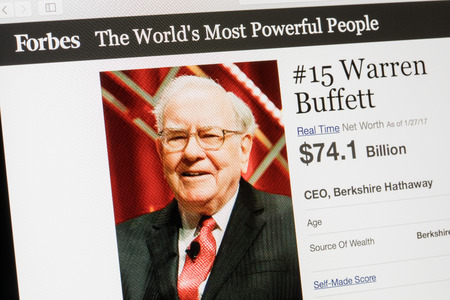Wealth the Warren Buffett way – a short guide to value investing
 Value investing is the share selection strategy famously used by business magnate Warren Buffett. Buffett is the third wealthiest person in the world, with total net worth exceeding $100 billion in Australian dollars.
Value investing is the share selection strategy famously used by business magnate Warren Buffett. Buffett is the third wealthiest person in the world, with total net worth exceeding $100 billion in Australian dollars.
Columbia University professor and economist, Ben Graham developed value investing in the 1930s. Value investing involves screening securities to find shares undervalued relative to peers and the market. The investor first assesses shares for their intrinsic value, using a fundamental metric such as the price-earnings ratio. They then only purchase shares if the share price is less than its intrinsic value.
With value investing, dividends, cash flow, and earnings growth matter more than market factors on the share price. The idea is that the market will eventually correct—and when that happens, the undervalued shares will rise in price and the investor will make money.
Buffett’s investments have consistently outperformed the market, decade after decade. This is the reason he’s become known as the “godfather” of value investing.
Warren Buffett’s story
In the early 1950s Buffett enjoyed success following Ben Graham’s investing guidelines. However he began to assess potential investments differently than his mentor. Graham kept his focus on the bottom line numbers—the balance sheet and income statement. Buffett on the other hand looked at a company’s corporate leadership and overall potential to generate earnings long term.
In 1962 Buffett bought Berkshire Hathaway, a failing textile company whose shares cost $7.50 each. He phased out its textile manufacturing division and transformed the business into a holding company for investments. By choosing to invest in a number of assets that proved lucrative in insurance, oil, and the media, Buffett was able to build Berkshire Hathaway into the incredibly profitable company it is today.
Value investing tips
These tips from a Business Insiders article on Warren Buffett’s winning investment strategies can help you become a more successful investor.
Re-think your diversification strategy
Buffett recommends selecting shares carefully, with an eye on the long-term future. Maintain focus on individual investments rather than hedging bets with a varied portfolio designed to minimise volatility.
Follow the 99-1 rule
Buffett warns investors not to sell as soon as it appears that a shares’ value is declining. This is what the 99% do, overreacting as they take in just 1% of the daily financial news.
Play the long game
Buffett’s approach to investing requires patience and commitment. He advises investors to select shares with potential and hang onto them for decades. Investors who constantly buy and sell may lose out on higher returns—and also end up paying more trading commissions and taxes.
Start with a formula for value investing
For more detailed information on value investing strategies check out this article on Investopedia. This includes guidelines for how to choose undervalued securities with excellent profitability potential.
You might also be interested in looking at The Essays of Warren Buffett: Letters to Corporate America. This is a collection of letters Warren Buffett wrote to Berkshire Hathaway shareholders. Another classic is Ben Graham’s book on value investing, The Intelligent Investor.
